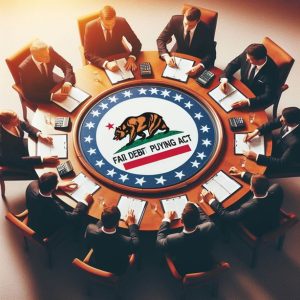If you’re a medical professional or office administrator worrying about unpaid patient invoices, you’re certainly not alone. Uncollected receivables aren’t just stressful—they threaten your practice’s cash flow, payroll, and overall peace of mind.
Here are 10 clear signs it’s time to partner with a professional medical debt collection agency to protect your financial health and your practice’s reputation:
1. Mounting Unpaid Invoices
If you notice your list of outstanding patient accounts growing month-over-month with minimal payments, it’s a clear indicator that your internal efforts aren’t enough.
2. Declining Cash Flow
Regularly facing negative cash flow or receiving alerts from your bookkeeper about dwindling bank balances is a strong sign you need professional collections support.
3. Excessive Time Spent Chasing Payments
Your staff should focus on patient care—not tracking down payments. If collections activities consume significant administrative hours, outsourcing is essential.
4. Repeated Ignored Communications
If your polite reminders and statements are repeatedly ignored or unanswered by patients, it’s a sign that the situation requires professional handling.
5. Concerned About Patient Relationships and Reputation
Maintaining patient trust and your practice’s reputation is vital. A reputable collection agency prioritizes respectful, professional interactions that preserve your relationships. Make sure that the collection agency itself has excellent Google reviews.
6. Lack of HIPAA-Compliant Processes
If your internal collection practices risk violating HIPAA regulations, partnering with a compliant medical debt collection agency ensures patient confidentiality and avoids costly penalties.
7. Increasing Write-Offs
Consistently writing off debts as losses severely impacts your profitability. Expert medical debt collectors employ proven strategies to maximize recovery rates, reducing the need for write-offs.
8. Delays in Paying Staff and Suppliers
If unpaid invoices are causing delays in payroll or vendor payments, your business’s financial stability—and its reputation with employees and partners—is at risk.
9. Frustration and Burnout Among Staff
Administrative burnout from dealing with collections affects morale and productivity. Outsourcing collections alleviates this burden, allowing your staff to return to essential healthcare tasks.
10. Low Recovery Rates from Internal Efforts
If your internal recovery rates remain consistently low, professional medical collection agencies, which typically achieve higher recovery rates through specialized experience and resources, can substantially boost collections performance.
Need a Medical Collection Agency? Contact UsServing Thousands of Medical Professionals NationwideEasy to use • Fully Compliant with HIPAA, Federal and State Laws • USA Citizens-Only Team • 24×7 Secure Portal • High Recovery Rates • Expert Medical Collectors • Free Credit Bureau reporting • Low fee |
Final Thoughts
Partnering with a specialized medical debt collection agency isn’t just about recovering unpaid bills. It’s about protecting your practice’s financial health, complying with HIPAA regulations, maintaining high recovery rates, and safeguarding your reputation throughout the collection process. Recognizing these signs early and taking action can make all the difference in securing the long-term success and peace of mind you deserve.



